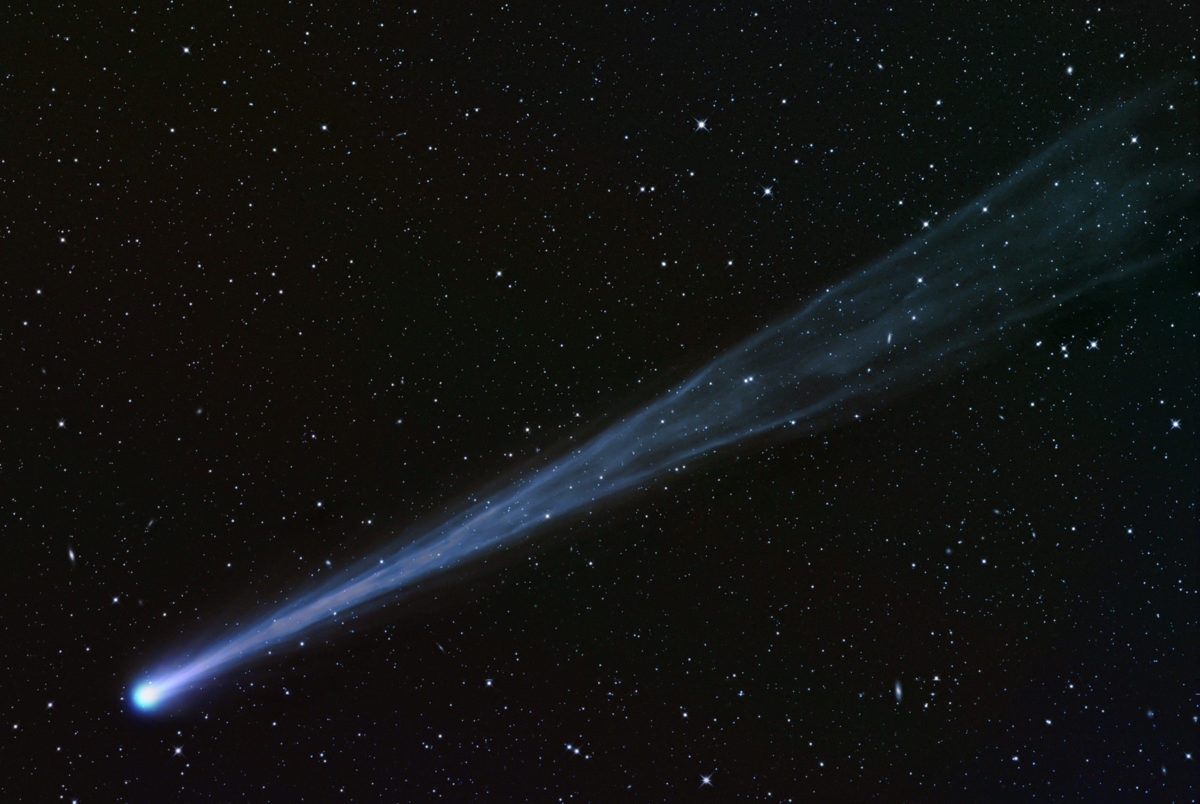Karl Battams • Nov 19, 2013
Comet ISON Enters the Final Countdown
This article was originally posted on the NASA Comet ISON Observing Campaign website and is reposted here with permission.
We’re now less than two weeks away from comet C/2012 S1 (ISON) reaching perihelion and, if we’re honest, we are still none the wiser as to how the situation might play out!
Last week, the CIOC’s Matthew Knight wrote an excellent blog post detailing the three possible outcomes for ISON in the coming days: imminent disintegration, disintegration at perihelion, or survival. Since he wrote that, comet ISON has undergone a dramatic shift in nature, with a brightness increase of at least an order or two of magnitude, and soaring rates of dust and gas being released from its nucleus. In light of this new development, we can now say with absolute certainty that comet ISON will definitely do one of those things that Matthew said it might do...
OK, that was vague. But the truth is, although this new development is tremendously exciting, it still doesn’t help us answer either of the questions that everyone wants to know: namely, how bright will comet ISON be, and will it survive perihelion?
The problem is that we don’t yet know why ISON has so suddenly and dramatically changed in brightness and production rates.

It could simply be that ISON has realized it’s a near-Sun comet (soon to be a sungrazer) and is beginning to “turn on” accordingly. After all, if it is to reach the lofty brightness goal of magnitude -3 to -5 that we long predicted (OK, guessed) that it might, then it has a lot of work to do in the next two weeks! This is actually a very likely scenario, and if true means that the first of Matthew’s scenarios – imminent disintegration – will not be the case.
But this requires the comet’s nucleus to remain intact, and this brings us nicely to the second possibility: comet ISON’s nucleus has fragmented. We always said this could happen, and it perhaps has. If so, it will still be several days before we know for sure. When comet nuclei fall apart, it’s not like a shrapnel-laden explosion; the chunks simply drift apart from one-another at slightly different speeds. Given that ISON’s nucleus is shrouded in such a tremendous volume of light-scattering dust and gas right now, it will be almost impossible to determine this for at least a few days and perhaps not until the comet reaches the field of view of the NASA STEREO HI-1A instrument on November 21. We will have to wait for the chunks to drift apart a sufficient distance, assuming they don't crumble first.
If ISON’s nucleus has fragmented, the chances of any substantial chunk of nucleus surviving the extreme close brush with the Sun on November 28 are really quite small – but still not impossible. And even if ISON’s nucleus does fall apart completely, Matthew painted us a promising picture in his second scenario with a comet that still graces our December night skies with an extensive and beautiful tail.
So even in the face of adversity and the unknown, there is still hope that we will see a vivid naked-eye comet in the night skies in Northern Hemisphere. And even if not, we have already obtained unprecedented scientific knowledge of this comet with data from ten different spacecraft to date, and a vast wealth of ground-based observations from professional and amateur astronomers. In this sense, cometary science has already won. It just remains to be seen how big that win will be.
With only 10 days until perihelion, comet ISON will soon disappear into the Sun's glare. During this time, we will monitor it with an armada of solar satellites including NASA's SDO and STEREO satellites, and the ESA/NASA SOHO satellite. These images will be posted directly online as soon as the data is retrieved from the spacecraft, mostly in real-time, and we will let you know those links nearer the time.
Follow us on the CIOC website through perihelion week as Matthew and I will be feverishly working, analyzing, blogging and tweeting as much as possible from atop Kitt Peak in Arizona. We will guide you through the most perilous part of comet ISON's journey through the solar system. Will it be fried by intense solar radiation? Will it be ripped apart by the Sun's extraordinary gravitational pull? Or will it survive in one piece and become a spectacular night sky object? We have no idea, but we can't wait to find out!
The Time is Now.
As a Planetary Defender, you’re part of our mission to decrease the risk of Earth being hit by an asteroid or comet.
Donate Today

 Explore Worlds
Explore Worlds Find Life
Find Life Defend Earth
Defend Earth

